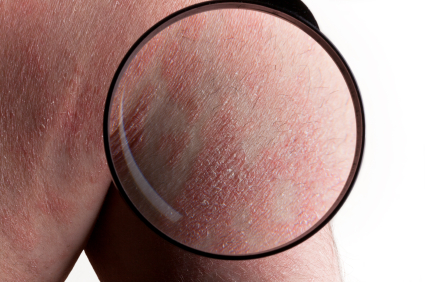Top Class Actions’s website and social media posts use affiliate links. If you make a purchase using such links, we may receive a commission, but it will not result in any additional charges to you. Please review our Affiliate Link Disclosure for more information.

“This is such a crazy story,” begins the co-anchor in an NBC Breaking News report April 3. “This lady’s skin is actually burning from the inside out,” the anchor continues.
However, this certainly isn’t breaking news for anyone who’s familiar with Stevens Johnson Syndrome (SJS), which is most commonly associated with medications such as the popular antibiotic Zithromax, over-the-counter Tylenol, and some anti-seizure medications, as well as dozens of other medications.
“There’s no cure for this disease, but doctors believe patients get this from a bad reaction to a medication,” the co-anchor says.
“Imagine every nerve ending on you being fried,” said a friend of the victim, Whitney Lewis.
Treated at Arkansas’s Children’s Hospital, the 19-year-old Texarkana student found herself “fighting for her life” after coming down with SJS. It started on her hands, Lewis’s mother explained, and then the blisters and burns started appearing at lightning speed.
“They didn’t know what it was,” her mother says. She “started having itchy eyes and swollen lips,” says the report. Early diagnoses ran the gamut “from strep throat to just allergies,” however, “the syndrome must run it’s painful course,” the doctors said.
One of the first tell-tale signs of SJS is blisters which gather in moist areas of the body. Not only is this painful, but it can cause blindness or permanent vision damage. The blisters will then spread to the rest of the body and cause the skin to literally peel away from the body. Once blisters are visible on 30 percent or more of the body, it becomes skin death, also known as Toxic Epidermal Necrolysis (TEN).
Patients are often treated in ICU burn units where the body is kept as clean as possible to ward off infection, in hope that the body is given enough nutrition and care to heal itself. It’s a slow and painful process.
“So now they’re looking at what might have caused it so we can prevent it in the future,” the friends continued.
In this particular case, it’s too soon to know how well she’ll recover, if there will be any permanent disfigurement or disabilities as doctors are still trying to pinpoint the initial cause.
SJS is excruciating and pain management is a big part of treating SJS. It is key to keep the body as clean as possible. People don’t die from SJS, but they can certainly die from an infection caused by SJS.
According to SJS class action lawsuits, the many drugs which are linked to the reaction simply don’t have a serious enough warning. Most people don’t know what SJS is unless they or someone they know has survived it. Since these medications are often prescribed to just about every demographic from young children to the elderly, it is a growing concern.
Plus, just because you’ve taken a drug safely before doesn’t make you immune. A person could take a medication their entire life and suddenly have an SJS attack. However, it is most common in a new prescription with SJS appearing in the first few days of the regimen.
SJS class action lawsuits are welcoming new members at an alarming rate with victims alleging that the reaction could have possibly been avoided with proper warning labels.
SJS starts as a “simple” rash but can turn lethal overnight with some two-year-olds dying from the reaction. SJS is still rare enough that many doctors and healthcare workers haven’t seen it in person. As a result, it is often misdiagnosed and SJS sufferers may not be getting the treatment they need quickly enough.
While SJS can be deadly, if a person gets treatment in time the survival rate is high.
In general, SJS lawsuits are filed individually by each plaintiff and are not class actions.
Do YOU have a legal claim? Fill out the form on this page now for a free, immediate, and confidential case evaluation. The attorneys who work with Top Class Actions will contact you if you qualify to let you know if an individual lawsuit or class action lawsuit is best for you. Hurry — statutes of limitations may apply.
ATTORNEY ADVERTISING
Top Class Actions is a Proud Member of the American Bar Association
LEGAL INFORMATION IS NOT LEGAL ADVICE
Top Class Actions Legal Statement
©2008 – 2024 Top Class Actions® LLC
Various Trademarks held by their respective owners
This website is not intended for viewing or usage by European Union citizens.
Get Help – It’s Free
Help for Victims of Stevens Johnson Syndrome
If you or a loved one were diagnosed with Stevens Johnson Syndrome (SJS) or toxic epidermal necrolysis (TEN) after taking a prescribed or over-the-counter medication, you may be eligible to take legal action against the drug’s manufacturer. Filing an SJS lawsuit or class action lawsuit may help you obtain compensation for medical bills, pain and suffering, and other damages. Obtain a free and confidential review of your case by filling out the form below.
An attorney will contact you if you qualify to discuss the details of your potential case at no charge to you.
Oops! We could not locate your form.












